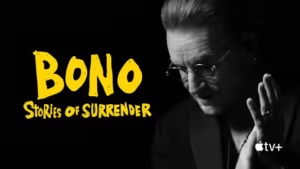
The Dorm (2021) – Complete Review – Zvideo
The Dorm (2021), a Russian drama set in the early 1980s in Sverdlovsk (now Yekaterinburg), offers a fascinating exploration of youthful dreams, ideals, and the deep complexities of human emotions. The movie stands out as a poignant study of student life, captured in a gritty yet poetic manner, making it an emotional and raw experience. Directed by Ilya Uchitel and based on a story by Anna Pakhomova, The Dorm presents a world where a group of university students co-exist within the confined, often suffocating, space of a dormitory. As the title suggests, the dormitory becomes a microcosm, a miniature model of the world, reflecting the full spectrum of human passions, fears, and failings.
Setting the Scene: A Snapshot of the Era and Location
The year is 1984. The setting is Sverdlovsk, USSR, a period in which the Soviet Union was experiencing the final years of its existence, which would soon unravel into a world of immense political and cultural shifts. The USSR, under the iron grip of communist ideology, was filled with repression and a controlled, surveillance-heavy society. However, within this world of conformity and rigidness, there were always those who sought an escape, a different reality, and youth was where these impulses flourished.
Sverdlovsk, an industrial city known for its strong historical ties to the Soviet Union, provides a gritty backdrop to the narrative. The city is somewhat isolated from the cultural movements in Moscow or Leningrad, but its students, particularly those residing in the dormitory, remain connected to the global aspirations of youth in ways that resonate throughout the film.
The Characters: A Study of Youth in Flux
The central characters of The Dorm bring the narrative to life, each representing a unique blend of personalities and dreams. The movie introduces us to a shy freshman, an ambitious entrepreneur, a poet, and two charming “it-girls” who occupy a space together in the dormitory. They all come from varied backgrounds, with different dreams, fears, and personal struggles.
- The Shy Freshman: The shy freshman serves as the film’s audience surrogate. He is quiet and observant, but his innocence and vulnerability set him apart from the other, more flamboyant characters. He is constantly searching for his place in this world of bustling ideals, friendships, and first love.
- The Entrepreneur: The enterprising student in the group is always seeking ways to make money and escape the limits placed by the Soviet system. He represents the capitalist drive in a system that was designed to suppress such ambitions. His character also exposes the tension between individuality and the collective ideal of Soviet life.
- The Poet: The poet offers the philosophical and emotional core of the group. His observations and reflections serve as a way for the film to explore deeper themes such as love, friendship, betrayal, and despair. His poetry is a lens through which the audience can engage with the struggles of the characters.
- The It-Girls: The two charming, fashionable it-girls in the dormitory embody the allure and superficiality of youth. They are adored by their peers but also represent the fragility and pretense of social popularity. Their behavior and relationships with others reflect the complexities of friendship, love, and rivalry.
Each character plays a crucial role in revealing the dynamics within the dorm and their interactions underscore the layers of emotion, vulnerability, and aspiration that exist within the space. These personalities interact in intricate and sometimes destructive ways, each exploring the boundaries between personal desires and societal expectations.
The Dormitory as a Microcosm of the World
The dormitory in The Dorm is not just a physical setting—it serves as a metaphor for the larger world outside its walls. Within this space, the students’ relationships and struggles serve as a reflection of the conflicts, tensions, and struggles that define the broader society.
The dormitory encapsulates human life in its most honest form, where love, passion, betrayal, and ambition intersect. The characters live in an environment where their personal lives and desires clash with their public personas. It is a space of both freedom and limitation, where youthful rebellion and conformity meet in a delicate balance.
As a collective unit, the dorm’s residents share their joys and griefs, standing by each other despite their flaws and imperfections. The phrase “all for one and one for all” resonates throughout, symbolizing the camaraderie that emerges from their shared experiences. Yet, this unity is fragile, and it is soon put to the test.
The Tragic Turning Point: The Suicide
Just as the dormitory’s seemingly harmonious balance is achieved, tragedy strikes when a female student commits suicide. The event is a horrifying jolt to the system, a stark reminder of the intense emotional struggles that simmer beneath the surface. This death unravels the fabric of their small community and sets in motion a series of personal reckonings for each character.
The suicide becomes the emotional climax of the film, pulling the audience into the raw, harrowing emotions of the dorm’s residents. This tragic moment encapsulates the theme of human fragility and underscores the larger existential questions that the film raises: How do individuals cope with pain and despair? How do they reconcile their dreams and the crushing realities of their world?
The film skillfully portrays the varying ways in which the characters react to the tragedy. Some characters seek to understand the reasons behind the suicide, while others turn inward, trying to make sense of their own emotional wounds. The suicide acts as a pivotal turning point in the film, forcing everyone to confront their vulnerabilities, their fears, and the harshness of the world they inhabit.
Themes: Love, Friendship, Betrayal, and Courage
At its core, The Dorm is a deeply human exploration of complex emotions and relationships. The film delves into the themes of love, friendship, betrayal, courage, and personal failure, all of which are amplified by the confined space of the dormitory. It is here that these students experience their most formative and defining moments—moments that will shape the rest of their lives.
- Love and Friendship: The characters’ friendships are tested and transformed throughout the film. Some bonds grow stronger, while others dissolve under the weight of secrets, betrayals, and misunderstandings. The relationships between the students are painted in shades of grey, emphasizing the imperfection and beauty of human connections.
- Betrayal: Betrayal is a recurring theme in The Dorm. It is not just about romantic betrayal but also the betrayal of trust, ideals, and personal integrity. The dynamics within the dorm create an atmosphere where everyone is susceptible to being betrayed, even by those they hold closest.
- Courage and Cowardice: The film examines the duality of human nature. Some characters rise to the occasion, displaying immense courage in the face of tragedy, while others succumb to fear, shame, and guilt. The question of what it means to be brave in a world that offers little certainty is explored with sensitivity.
- Aspirations and Failures: The students’ dreams are put under the microscope. Each character has aspirations for greatness—whether in love, career, or intellectual achievement. However, these dreams are frequently dashed by the harshness of the environment, both within the dorm and outside it. The Dorm reflects on how ambition can lead to both success and failure, offering a nuanced portrayal of youthful desire.
Cinematic Style and Direction
Ilya Uchitel’s direction in The Dorm is masterful, using the dormitory setting not just as a backdrop, but as an active element in the storytelling. The confined space of the dorm creates a sense of claustrophobia, amplifying the emotional weight of the characters’ struggles. Cinematographer Pavel Kapinos uses light and shadow effectively to highlight the inner emotional turmoil of the characters. The use of muted colors and stark interiors adds to the atmosphere of loneliness and isolation that pervades the story.
The pacing of the film is deliberate, allowing the characters’ interactions to unfold naturally. The moments of tension, sadness, and joy are given room to breathe, allowing the audience to become fully immersed in the emotional lives of the characters.
The Cast: A Strong Ensemble
The cast of The Dorm delivers a compelling and heartfelt performance. Yuliya Aug, Nikita Efremov, Evgeniy Sannikov, Mariya Ivashchenko, and Alena Mikhaylova all bring depth and nuance to their roles, fully embodying the complex emotions of their characters.
Yuliya Aug, in particular, stands out for her portrayal of the emotional center of the dormitory. Her nuanced performance brings to life the struggles of the poet character, whose sensitivity and vulnerability resonate throughout the film.
Conclusion
The Dorm is an emotionally charged and thought-provoking film that explores the intricacies of youth, relationships, and the devastating consequences of unaddressed pain. The tragic suicide that shakes the dormitory serves as a lens through which the characters, and the audience, confront the rawness of the human condition. It is a film that reveals the complexities of love, ambition, friendship, and despair.
While set in a specific time and place—the Soviet Union of the 1980s—the themes explored in The Dorm are universal. The film invites the viewer to reflect on their own experiences, relationships, and the often-contradictory forces that shape their lives. Through the lens of the dormitory, The Dorm provides an unflinching look at the vulnerabilities and contradictions of human nature, making it a must-watch for anyone interested in complex emotional storytelling.







